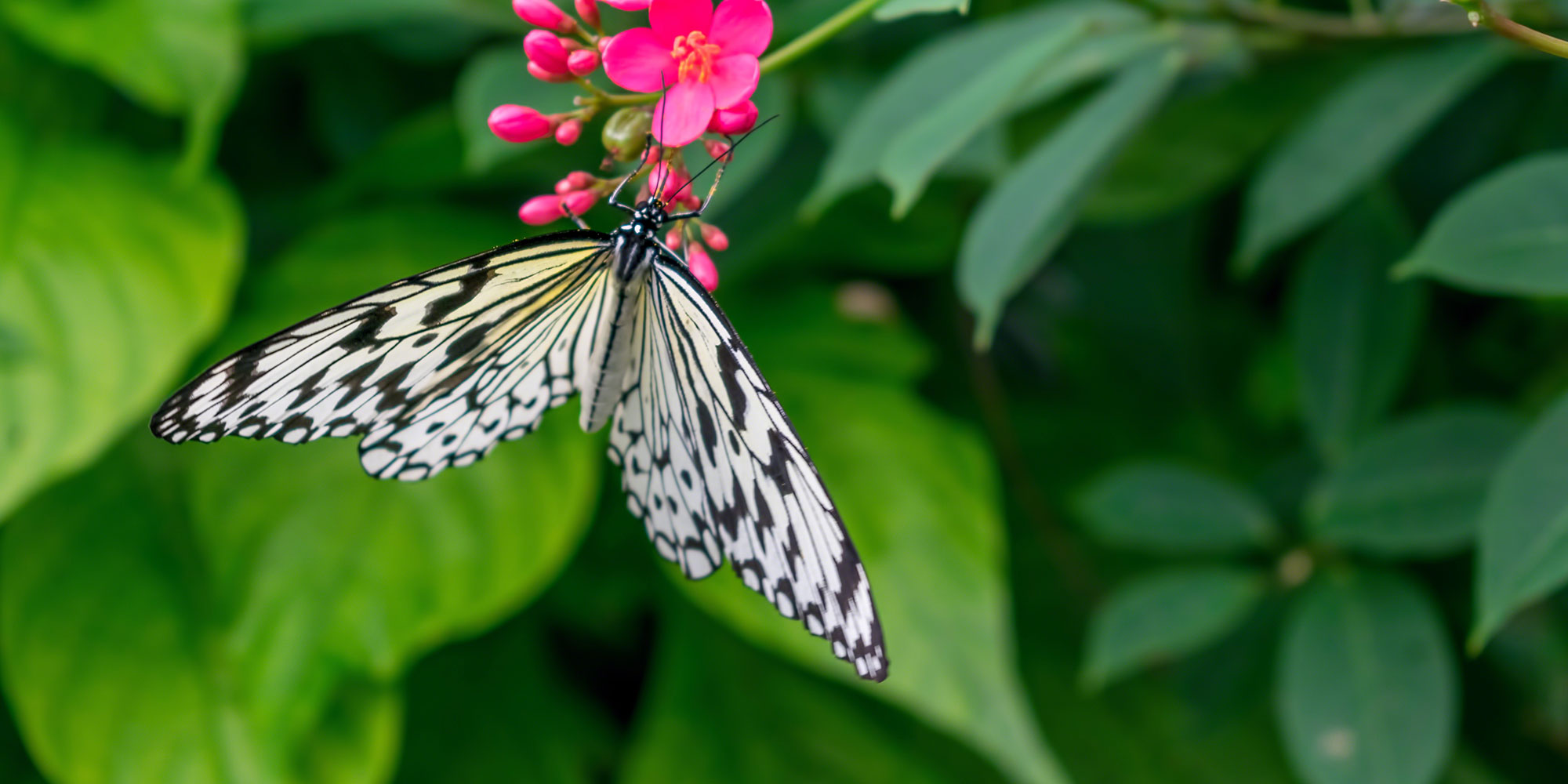Thousands of butterflies from all over the world, inhabit this lavish indoor tropical garden. Some flutter and flit from flower to flower, sipping nectar. While others enjoy feeding on fruit at several secluded feeding stations. Still, others hide in the many trees and vines, resting up for their next flight.
Because most butterflies only live for a couple of weeks, new butterflies arrive directly from Africa, Central America, South America, Asia, and North America constantly! The entomologists at the Butterflies, Bugs & Bees Habitat receive 800-1,200 butterfly pupae each week. At any one time, there are 40-50 different species of butterflies flying in the habitat. We receive 150 different species, so each time you visit, you will see new and exciting butterfly species!
You can follow trains of iridescent blue morpho butterflies as they chase one another around the exhibit! If you look closely in the darker corners of the exhibit, you might find tiny, transparent glass wing butterflies from South and Central America, which prefer the relative safety of the dark undergrowth of tropical rainforests. You can even marvel at the world’s largest moth, the atlas moth, which rests proudly in the garden’s trees and shrubs, showing off its mammoth 12-inch wingspan!
The Butterfly exhibit also features a look into our butterfly laboratory! Here you will be able to see our emergence chambers filled with butterfly chrysalises waiting to emerge. Hundreds of butterflies can emerge each day, and if you’re lucky you may see when the pupae arrive at the aquarium.
Please join us in this year-round exhibit, the only one of its kind on Long Island, and in New York!
Butterflies and Moths: Lepidoptera
Basic info: Butterflies and moths are types of insects with tiny, microscopic scales covering their wings and the surface of their body! There are over 180,000 known species of these animals and they can be found on every continent except Antarctica. In general, an adult butterfly only lives for a few weeks. Although they can live for very much longer as an egg, caterpillar (larva), or chrysalis (pupa), sometimes several years.
Butterflies versus moths: In general, there really are very few differences between butterflies and moths and the true distinctions between the two groups really involve minute differences in wing and body structure. However, butterflies do tend to have clubbed antennae, while moths have hairlike, comblike, or feathery antennae. Out of the 180,000 different species of butterflies and moths, there are only about 20,000 species of butterflies; the rest are moths!
Complete metamorphosis: All butterflies and moths start life as an egg and hatch into a caterpillar or larva, which will eventually turn into a pupa. Some butterflies and moths will spin a silk cocoon around their pupa. While others have developed many features on the surface of their pupae, which allow them to either blend in with their environment or inform predators that they are toxic; these are called chrysalises.
